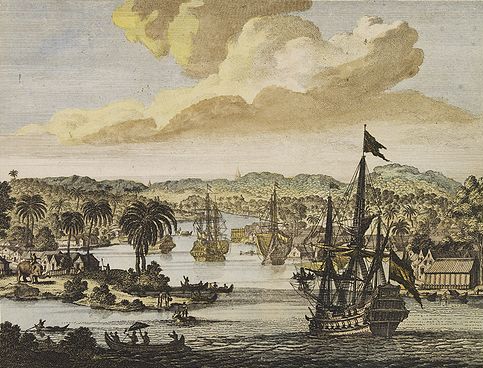The New World is one of the names used for the Western Hemisphere, specifically the Americas (including nearby islands such as those of the Caribbean and Bermuda).

The New World is one of the names used for the Western Hemisphere, specifically the Americas (including nearby islands such as those of the Caribbean and Bermuda).
The term originated in the early 16th century after Europeans made landfall in what would later be called the Americas in the age of discovery, expanding the geographical horizon of classical geographers, who had thought of the world as consisting of Africa, Europe, and Asia, collectively now referred to as the Old World (aka Afro-Eurasia).

The term was first coined by Florentine explorer Amerigo Vespucci. The Americas were also referred to as the "fourth part of the world"
The terms "Old World" vs. "New World" are meaningful in historical context and for the purpose of distinguishing the world's major ecozones, and to classify plant and animal species that originated therein.
One can speak of the "New World" in a historical context, e.g., when discussing the voyages of Christopher Columbus, the Spanish conquest of Yucatán and other events of the colonial period. For lack of alternatives, the term is also still useful to those discussing issues which concern the Americas and the nearby oceanic islands, such as Bermuda and Clipperton Island, collectively. This usage is seen as problematic by many for its narrowness of perspective and implication that discovery by European explorers was the beginning of history for the Americas.
The term "New World" is used in a biological context, when one speaks of Old World (Palearctic, Afrotropic) and New World species (Nearctic, Neotropic). Biological taxonomists often attach the "New World" label to groups of species which are found exclusively in the Americas, to distinguish them from their counterparts in the "Old World" (Europe, Africa and Asia), e.g. New World monkeys, New World vultures, New World warblers.

The label is also often used in agriculture. Africa, Asia, and Europe share a common agricultural history stemming from the Neolithic Revolution, and the same domesticated plants and animals spread through these three continents thousands of years ago, making them largely indistinct and useful to classify together as "Old World". Common Old World crops (e.g., barley, lentils, oats, peas, rye, wheat), and domesticated animals (e.g., cattle, chickens, goats, horses, pigs, sheep) did not exist in the Americas until they were introduced by post-Columbian contact in the 1490s (see "Columbian Exchange"). Conversely, many common crops were originally domesticated in the Americas before they spread worldwide after Columbian contact, and are still often referred to as "New World crops"; common beans (phaseolus), maize, and squash - the "three sisters" - as well as the avocado, tomato, and wide varieties of capsicum (bell pepper, chili pepper, etc.), and the turkey were originally domesticated by pre-Columbian peoples in Mesoamerica, while agriculturalists in the Andean region of South America brought forth the cassava, peanut, potato, quinoa and domesticated animals like the alpaca, guinea pig and llama. Other famous New World crops include the cashew, cocoa, rubber, sunflower, tobacco, and vanilla, and fruits like the guava, papaya and pineapple. There are rare instances of overlap, e.g., the calabash (bottle-gourd), cotton, and yam, and the dog, are believed to have been domesticated separately in both the Old and New World, their early forms possibly brought along by Paleo-Indians from Asia during the last ice age.
info:https://en.wikipedia.org






